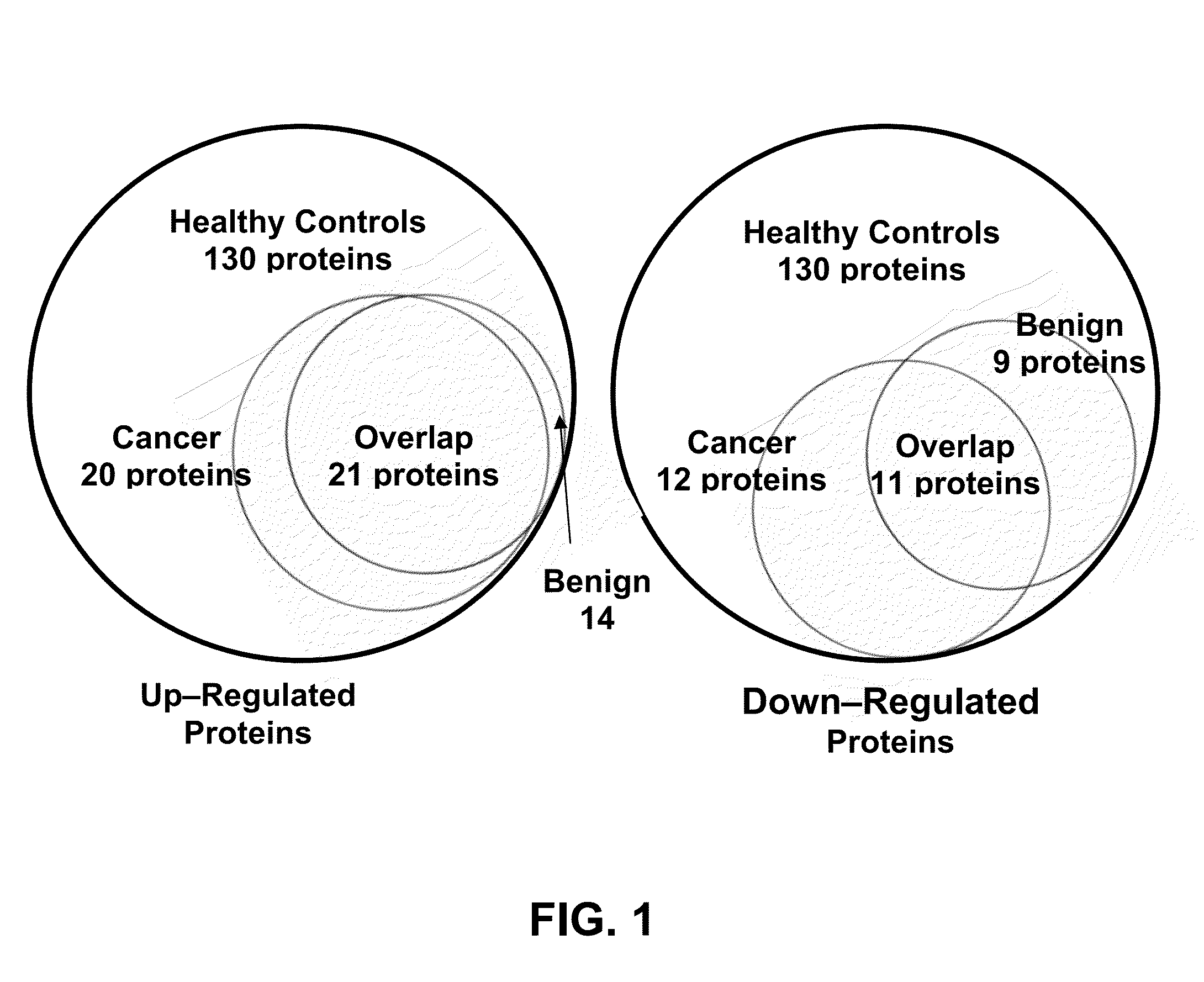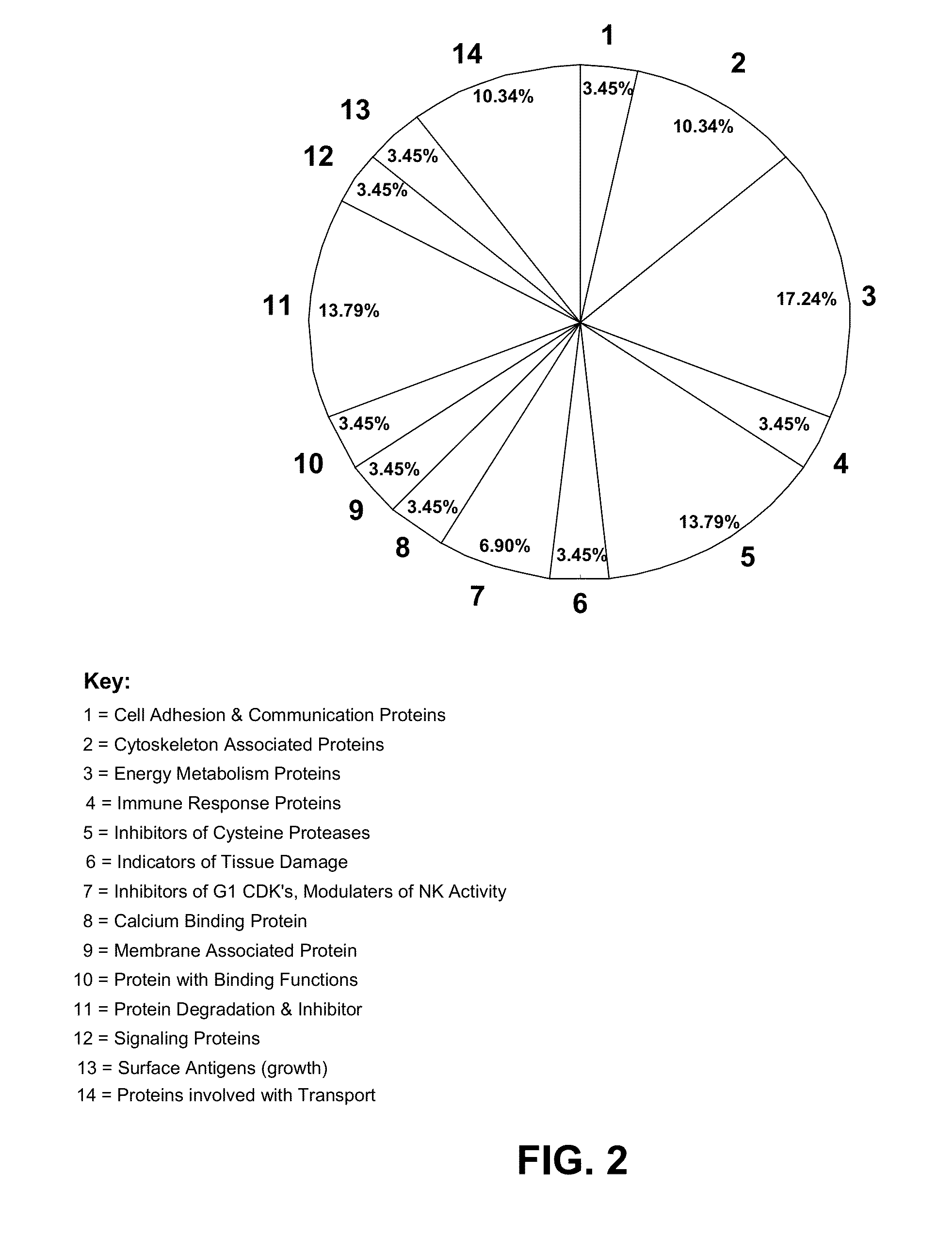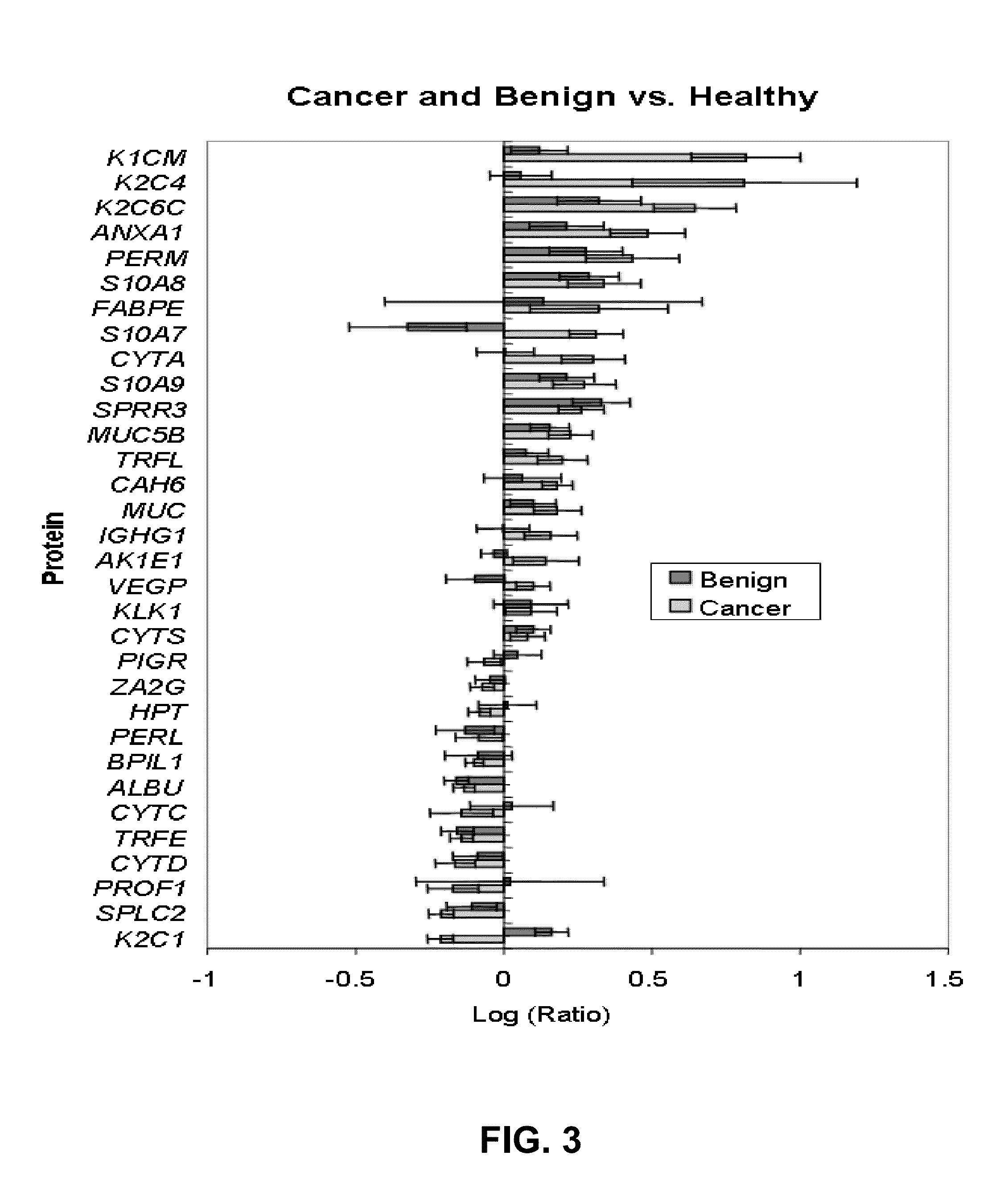Detection of saliva proteins modulated secondary to ductal carcinoma in situ of the breast
a saliva protein and ductal carcinoma technology, applied in the field of breast cancer diagnosis methods and compositions, can solve the problems of low detection sensitivity, large false positive and false negative, and low detection sensitivity of cancerous lesions in younger women, and achieve the effect of high salivary marker level and cost-effectiveness
- Summary
- Abstract
- Description
- Claims
- Application Information
AI Technical Summary
Benefits of technology
Problems solved by technology
Method used
Image
Examples
Embodiment Construction
[0030]It was investigated in the present studies whether protein-by-products secondary to cancer related oncogenes that are over or under expressed appear in the saliva of breast cancer patients. It is proposed that saliva is a fluid suffused with solubilized protein by-products of oncogenic expression and these proteins are modulated secondary to ductal carcinoma in situ (DCIS) of the breast. Additionally, there are salivary protein profiles that are unique to both DCIS and fibroadenoma tumors. Such differences between DCIS and fibroadenoma are potentially valuable for noninvasively detecting and diagnosing breast cancer.
[0031]Saliva was selected for investigation as a diagnostic fluid primarily for two reasons: 1) collection of saliva is a non-invasive procedure that can be conducted in any environment requiring no special skills or equipment; and 2) the physiology of the oral cavity is such that the flow of secreted fluid is continually flushing and refreshing the fluid content o...
PUM
| Property | Measurement | Unit |
|---|---|---|
| temperature | aaaaa | aaaaa |
| pH | aaaaa | aaaaa |
| flow rate | aaaaa | aaaaa |
Abstract
Description
Claims
Application Information
 Login to View More
Login to View More - R&D
- Intellectual Property
- Life Sciences
- Materials
- Tech Scout
- Unparalleled Data Quality
- Higher Quality Content
- 60% Fewer Hallucinations
Browse by: Latest US Patents, China's latest patents, Technical Efficacy Thesaurus, Application Domain, Technology Topic, Popular Technical Reports.
© 2025 PatSnap. All rights reserved.Legal|Privacy policy|Modern Slavery Act Transparency Statement|Sitemap|About US| Contact US: help@patsnap.com



